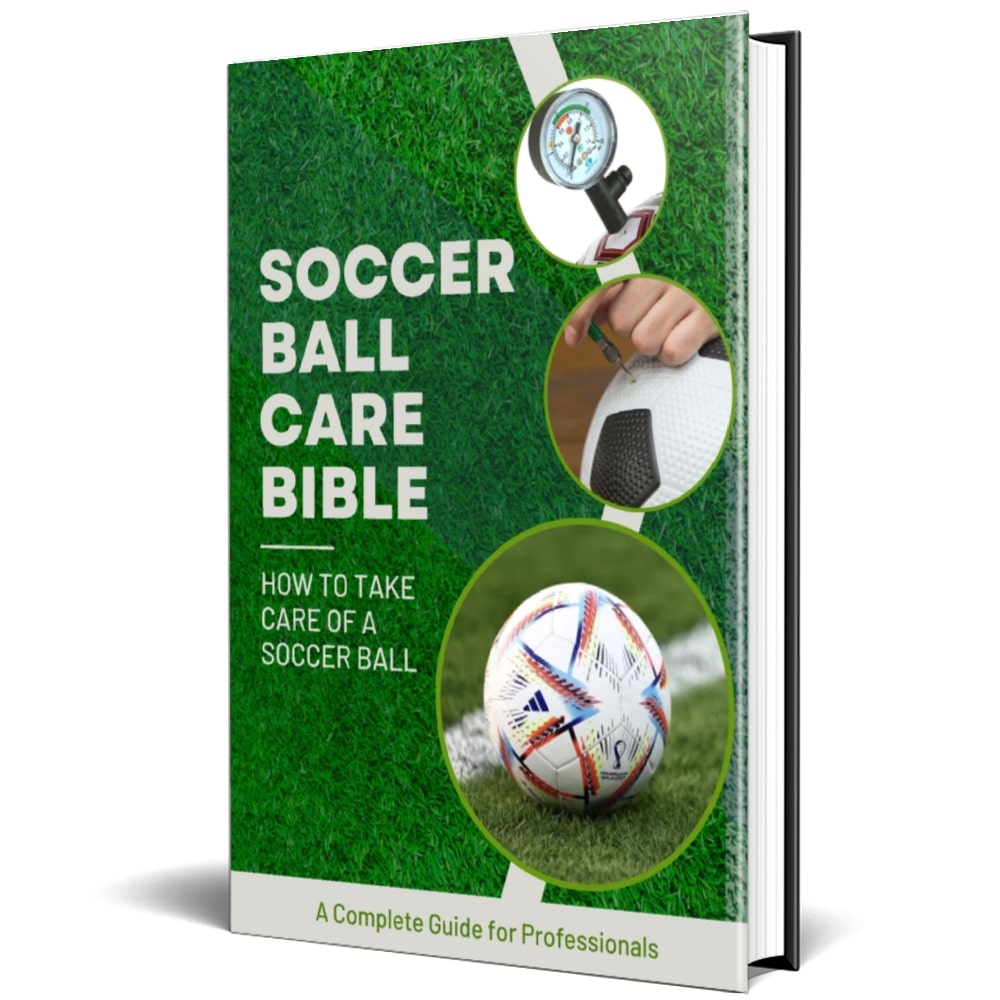Picture a scenario where you’ve just finished playing a casual game of soccer with a group of friends.
It could have been at the local park or even within the confines of a dedicated indoor arena.
After the match, the owner of the soccer ball heads home and simply dumps the object on the lawn, before closing the front door.
Now fast forward a couple of weeks into the future, when he or she is set to go for another kickabout session with the previously mentioned friend group.
This time however, the soccer ball isn’t fit for purpose because it lacks sufficient air pressure and its outer surface material is worn.
You’re probably thinking…
What could have caused the ball’s condition to deteriorate significantly in such a short time span?
Well, I could personally think of a number of possibilities.
For starters, a stray dog could have spotted the ball and grabbed it by the teeth for a little while, causing a puncture in the process.
Alternatively, the soccer ball could have been exposed to heavy rainfall, with temperature fluctuations placing undue stress on the ball’s structural integrity.
However, one thing that’s abundantly clear in the aforementioned example is that the soccer ball was not stored correctly or appropriately.
So, how do you store a soccer ball?
Here’s a concise summary for you…
A soccer ball should be neatly kept away in a dry and well-ventilated room temperature location. More so, it should either be partially or fully deflated when not in use, as the air pressure reduction relieves tension on the stitching, thereby helping to prolong its productive life.

Want to test your knowledge on soccer ball care?
Take the quiz by clicking the button below and see just how informed you truly are!
Note - You'll need to enter your email address to see the final results.

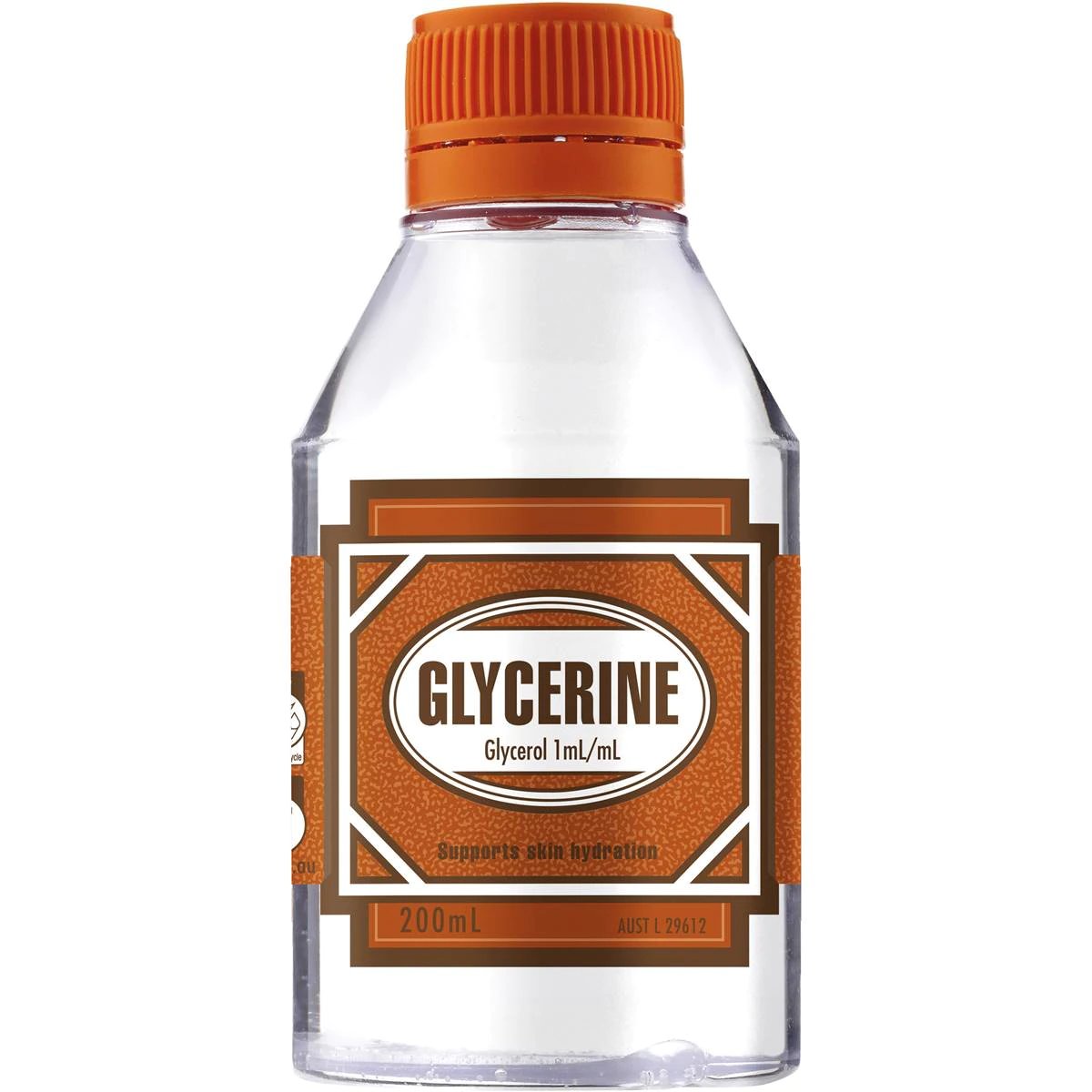
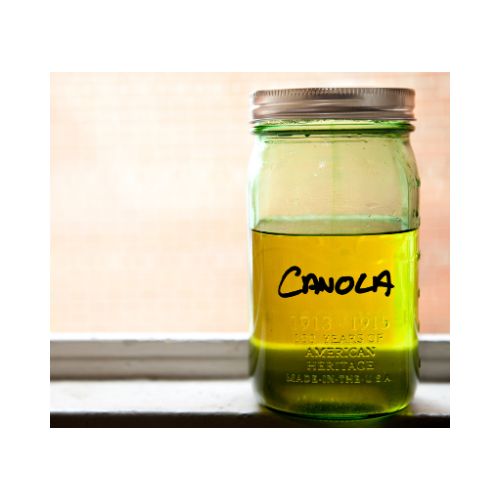


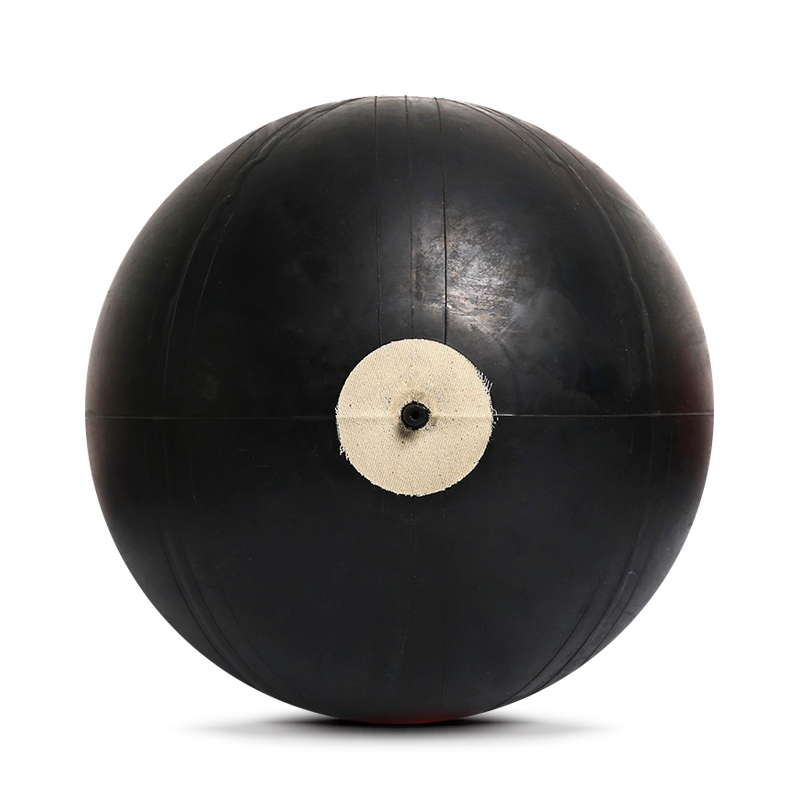




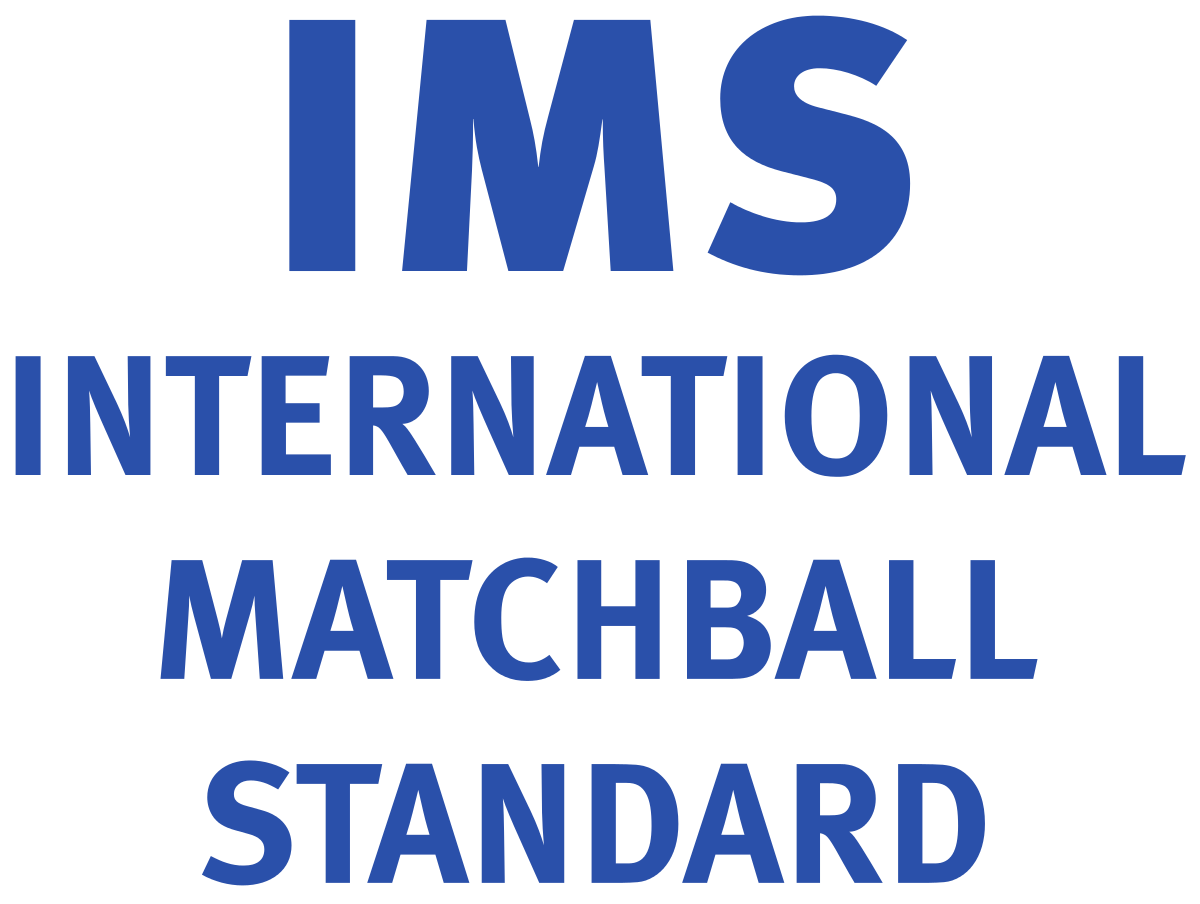




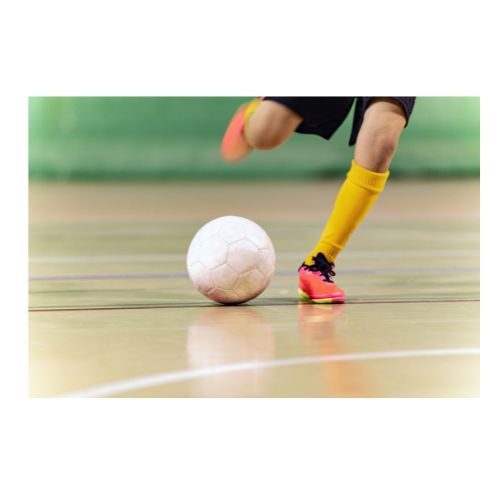








Even with that said, it’s important for me to dig deeper into this topic in order to give readers a clearer picture on how to correctly store soccer balls that are not in use.
So, stick to this browser tab if you want to find out more!
What are the general soccer ball storage guidelines?
It’s really not that hard to take care of a soccer ball, especially when it comes to the aspect of storage.
By following a basic set of pointers, you can have your ball in tip-top shape and ready for the next match every time it is required.
I’ll now outline these below.
1. Get a room temperature location
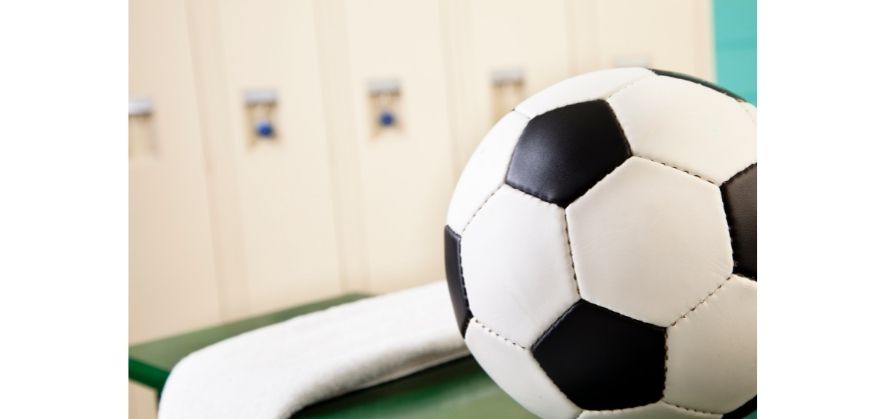
The importance of this tip cannot be overstated.
You see, changes in the temperature of the atmosphere surrounding the soccer ball can stress its materials and lead to increased tear and wear the longer and more frequent it is exposed to the extremes of heat or cold.
Science backs this up too, as the process of thermal expansion is brought about by higher temperatures within an object, ultimately resulting in higher molecular energy levels that give way to greater atom separation distances which cause the overall expansion.
The opposite phenomenon – thermal contraction – is said to occur when objects cool as well.
So, for example, if a soccer ball was to get too hot, it would expand internally and this would place much more tension on the inner bladder and the stitching; possibly even leading to a loss of its spherical shape.
What this means for users is that they shouldn’t leave their soccer balls within a hot or cold car trunk, nor leave them outside in the open air, as exposure to the weather elements (rain, hail, wind, etc.) can damage them.
2. Full or partial deflation

Another important part of soccer ball storage is reducing the air pressure within these objects before you tuck them away.
By keeping them in a partially inflated or deflated state, you will be relieving stress on the stitching of the ball which will help with maximising its overall longevity.
The stitches are what holds the ball together, and any tears here will cause the inner bladder to protrude and you’ll then have a problem on your hands as the ball will no longer bounce uniformly.
Although, removing the air pressure might not be particularly practical in cases where you have a collection of training soccer balls that you use every now and then.
But I’d argue that its critical to keep your expensive soccer balls in the best shape possible, especially due to the fact that those ones cost quite a pretty penny to replace.
So, grab the valve needle and carefully insert it into the ball’s opening.
Once you’ve done that you should hear the sound of the air coming out and the ball will gradually begin to deform.
After you’re satisfied with the new pressure level, you simply remove the needle and keep the soccer ball in its deflated state within the room temperature location.
If you’re looking for a more comprehensive guide on this, check out my post on how to deflate a soccer ball.
3. Use a cloth for cleaning
One other thing that I’m sure a lot of people tend to forget is cleaning their soccer ball before storing it.
Now not all playing surfaces are made equal.
Sometimes you’ll find yourself kicking your soccer ball on a muddy pitch, with the rain pouring down.
On other occasions, the soccer ball might be rolling along sandy terrain.
This inevitably leads to the ball accumulating mud spots and tiny scuffs, and the last thing you’ll want to do is leave these to dry up unattended.
A damp cloth is sufficient to wipe away the stains, as more aggressive cleaning techniques such as hard brushing and power-washing may warp the shape of the ball and cause other unintended bits of damage.
If you want more fleshed-out information on this topic, check out my guide on how to clean a soccer ball.
Why should you store a soccer ball between uses?
With the brief tale that I documented at the beginning of the article, and the storage guidelines that I’ve just highlighted, you should now have enough insight as to why a soccer ball should be stored properly.
But I’ll use just a few bullet points to summarise the benefits of soccer ball storage:
- Temperature fluctuations are kept in check
- Reduced stress on the outer ball surface and stitching
- Lower susceptibility to punctures and other types of damage
- Rain and other precipitation are prevented due to the dryness of the location
How frequently should a soccer ball be stored?
Although the answer to this question will vary from person to person, I’m going to go out on a limb and say that a soccer ball should be stored after every single period of extended use.
If you know that you won’t be using it the very next day, go ahead and keep it away in a dry and airy place after you’ve deflated it and wiped it clean.
Now take a second to think about the soccer balls that professional player use.
Do you think that these FIFA Quality Pro and FIFA Inspected soccer balls are being left to rot away on the pitch after competitive games?
Of course not!
Whilst some of them are handed to fans as souvenirs after matches, a lot of them are safely kept away by the referee after the 90 minutes have concluded.
Obviously its not entirely clear where the used soccer balls are taken afterwards as the cameras don’t follow the match officials down and into the stadium tunnel, but my guess is that the regulatory bodies for these professional divisions have some sort of storage chamber where all the balls are kept.
And it’s also worth pointing out that unwritten traditions allow players to keep a soccer ball at home if they manage to scoring a hat-trick during a game.
Other recommended soccer ball storage solutions
Before I wrap things up with a short summary, I just want to highlight the fact that you don’t need some massive storage space in order to keep your soccer ball in the best possible condition.
Here are some more options that you can consider.
1. Soccer ball bags

Soccer ball bags are large bags that are wide and flexible enough to carry a good number of size 5 inflated soccer balls.
From the image above, you can see that they usually come with some sort of transparent netting that allows the balls to move around without causing damage to one another when in transit.
2. Kit bags
If you’re short on space you might want to consider a football kit bag as an alternative.
These duffle bags are smaller than soccer ball bags but you should be able to squeeze in at least one or even two soccer balls into them without much difficulty.
And the other advantage is that these kit bags come with other micro-compartments that you can use to fit in other pieces of soccer gear like shin pads and gloves.
Here’s a product roundup I wrote on the best football kit bags that outlines the top options.
Conclusion
Once you’ve got a great soccer ball to take care of, you’ll want to do the best you can to take care of it.
This includes storing it neatly and securely as you’ll have learnt from this piece.
So, I’ll finalise with a summary that runs through the main storage procedures:
Store your soccer ball in a spacious location that is well ventilated. Also ensure that you wipe it clean with a damp cloth and either partially or fully deflate the ball before keeping it away.
Finally, before you go, you should check out our eBook on Soccer Ball Care.
Within this monster of a resource, we tackle all there is to know about looking after a soccer ball and maximising its useful life right from when you purchase this type of product.
This eBook covers a plethora of different topics, such as:
- soccer ball construction;
- inflation and pressure management;
- cleaning and maintenance;
- soccer ball storage; and
- how to extend the useful life of your ball
In just a couple of hours, you’ll have more knowledge on what is good and bad for your soccer ball than you could ever fathom!
You’ll learn how to inflate your soccer ball to the correct level of air pressure based on the size of ball you have, as well as know how to clean and store your soccer ball properly after games.
But I don’t think there’s anything better than being able to effectively troubleshoot problems with your soccer ball and fix them yourself!
So, you can finally take care of your soccer ball for many months to come, which without a doubt will save you time and money as won’t be searching for and buying a replacement any time soon.
With just one click…
Grab yourself a copy right now for only $29!
If you enjoy the content that I create and would like to buy me a coffee, then I’d really appreciate it!
Any money that I earn through this donation will be re-invested into more content for this website.
Additionally, by sending in a donation you’ll also receive a copy of my recently released 190+ page eBook on Soccer Ball Care, as well as be subscribed to our mailing list where you’ll be regularly informed on the latest developments concerning the Soccer Whizz blog.
- Future Icons: Europe’s Emerging Midfield Maestros Set for Glory - December 4, 2023
- Kickstarting a Revolution: How Soccer Transformed the United States Over the Last Four Years - October 7, 2023
- 4-1-4-1 Soccer Formation [Analysis] - September 23, 2023

